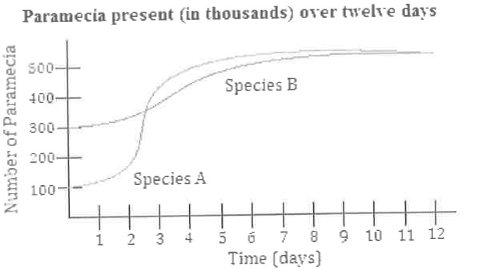If ammonia is added to pure water, the concentration of a chemical species already present will decrease. The species is
OΘ2
ΘOH
H3O⊕
H2O
The correct Answer is:C
To solve the question, we need to analyze the reaction that occurs when ammonia (NH₃) is added to pure water. Here’s a step-by-step breakdown of the solution:
Step 1: Identify the Reaction
When ammonia is added to water, it reacts with water molecules. The reaction can be represented as follows:
NH3+H2O⇌NH+4+OH−
Step 2: Understand the Role of Ammonia
In this reaction, ammonia (NH₃) acts as a Lewis base. It accepts a proton (H⁺) from water (H₂O), which acts as a Lewis acid. This results in the formation of ammonium ions (NH₄⁺) and hydroxide ions (OH⁻).
Step 3: Identify the Species Already Present
In pure water, the concentration of hydronium ions (H₃O⁺) is very low, but it is present due to the autoionization of water:
H2O⇌H++OH−
Step 4: Analyze the Effect of Adding Ammonia
When ammonia is added to the water, it increases the concentration of hydroxide ions (OH⁻) in the solution. According to Le Chatelier's principle, the increase in OH⁻ concentration will shift the equilibrium of the water autoionization reaction to the left, leading to a decrease in the concentration of hydronium ions (H₃O⁺).
Conclusion
Thus, the chemical species whose concentration decreases when ammonia is added to pure water is:
H₃O⁺ (hydronium ions)
Final Answer
The species whose concentration will decrease is H₃O⁺.
---
When ammonia is added to water, it reacts with water molecules. The reaction can be represented as follows:
In this reaction, ammonia (NH₃) acts as a Lewis base. It accepts a proton (H⁺) from water (H₂O), which acts as a Lewis acid. This results in the formation of ammonium ions (NH₄⁺) and hydroxide ions (OH⁻).
In pure water, the concentration of hydronium ions (H₃O⁺) is very low, but it is present due to the autoionization of water:
When ammonia is added to the water, it increases the concentration of hydroxide ions (OH⁻) in the solution. According to Le Chatelier's principle, the increase in OH⁻ concentration will shift the equilibrium of the water autoionization reaction to the left, leading to a decrease in the concentration of hydronium ions (H₃O⁺).
Thus, the chemical species whose concentration decreases when ammonia is added to pure water is:
The species whose concentration will decrease is H₃O⁺.
Topper's Solved these Questions
- IONIC EQUILIBRIUMBOOK - CENGAGE CHEMISTRY ENGLISHCHAPTER - IONIC EQUILIBRIUMEXERCISE - Exercises Assertion-Reasoning
36 Videos
- IONIC EQUILIBRIUMBOOK - CENGAGE CHEMISTRY ENGLISHCHAPTER - IONIC EQUILIBRIUMEXERCISE - Exercises Integer
10 Videos
- IONIC EQUILIBRIUMBOOK - CENGAGE CHEMISTRY ENGLISHCHAPTER - IONIC EQUILIBRIUMEXERCISE - Exercises Multiple Correct
33 Videos
- HYDROGEN, WATER AND HYDROGEN PEROXIDEBOOK - CENGAGE CHEMISTRY ENGLISHCHAPTER - HYDROGEN, WATER AND HYDROGEN PEROXIDEEXERCISE - Subjective Archive (Subjective)
3 Videos
- ISOMERISMBOOK - CENGAGE CHEMISTRY ENGLISHCHAPTER - ISOMERISMEXERCISE - Assertion-Reasoning Type
1 Videos
Similar Questions
Knowledge Check

A small puddle is monitored by scientists for the number of paramecia present. The scientists are in two distinct species, let's call them ''species A'' and ''species B''. At time t = 0, the scientists measure and estimate the amount of species A and species B present in the puddle. They then proceed to measure and record the number of each species of paramecium present every hour for 12 days. the data for each species were then fit by a smooth curve, as shown in the graph above. Which of the following is a correct statement about the data above?AAt time t = 0, the number species B present is 150% greater than the number of species A presentBAt time t = 0, the number of species A present is 75% less than the number of species B presentCFor the first 3 days, the average growth rate of species B is higher than the average growth rate of species A.DThe growth rate of both rate of both species A and species B decreases for the last 8 days.
In which species O-O bond is present
View SolutionWhat is ionosphere and what type of species are present in it?
View SolutionName Two chemicals used to destroy germs present in water.
View SolutionThe size of the species Cl,Cl− and Cl+ decreases as
View SolutionSpecies present in acidic aq. solution are :
View SolutionThe group that has the species correctly listed in the order of decreasing radius is:
View SolutionWhat happens to the water potential of pure water when solutes are added to it?
View Solution
